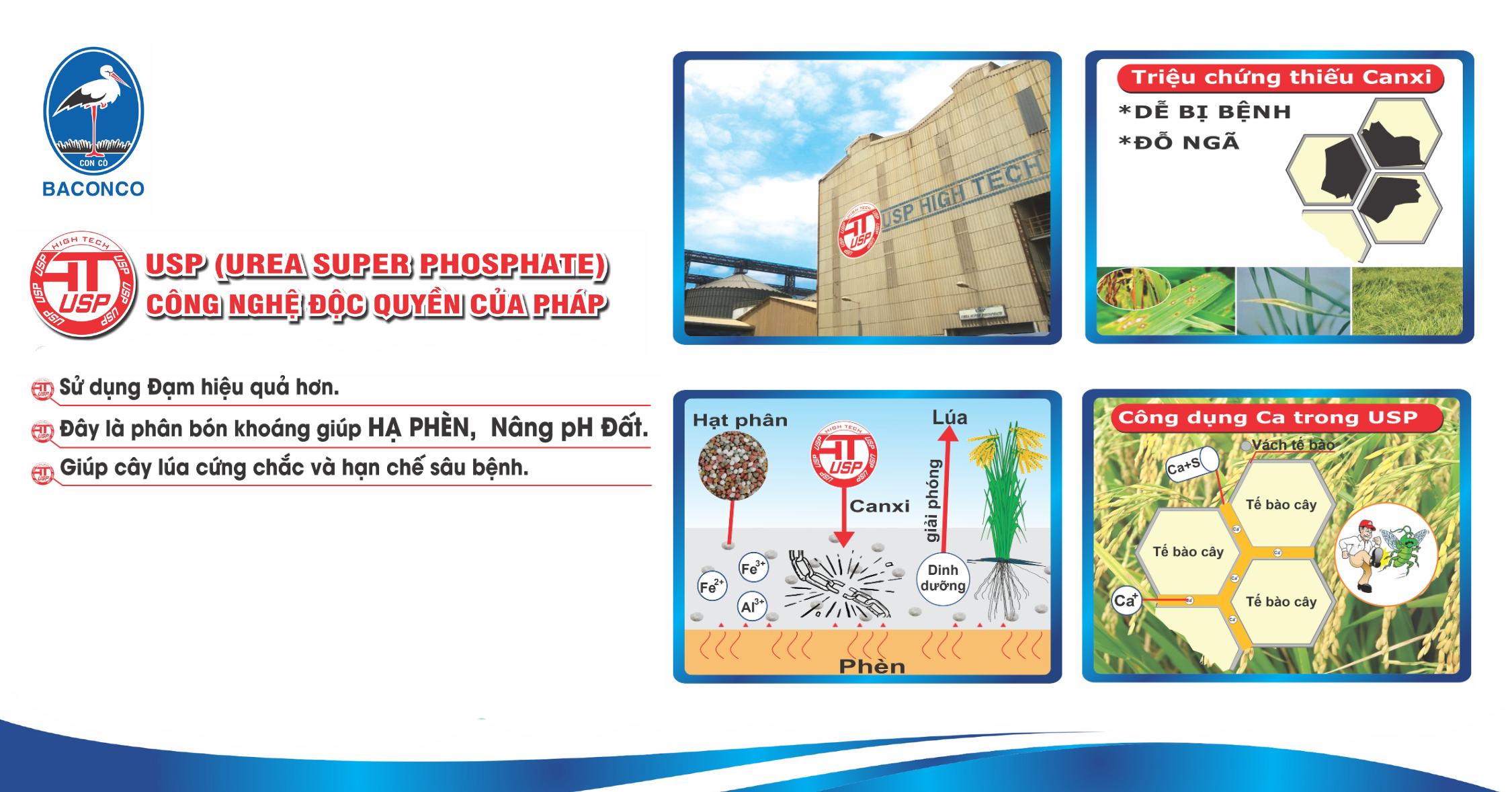Eliminate Concerns about Toxicity in Acid Sulphate Soil with Exclusive USP Technology from Baconco
12 Dec 2024

Sustainable agriculture on acidic soil? Baconco's USP technology offers effective solutions for treating acidic soil and enhancing the quality of agricultural products. Let's explore this with Baconco in the article below!
The state of acidic soil pollution in the Mekong Delta
The Mekong Delta is one of the regions most severely affected by iron (acidic) pollution in Vietnam. Provinces such as Ca Mau, Bac Lieu, Soc Trang, and Hau Giang are typical areas heavily contaminated with iron and acidity.
Acidic soil pollution is a familiar issue in the Mekong Delta. Source: Internet
Acidic soil pollution is a complex problem with many intertwined causes. This situation often arises from several common factors:
- Natural characteristics: The Mekong Delta has low-lying terrain, is close to the sea, and is influenced by tidal patterns, allowing saline water to intrude deep inland. This process leads to salinization and acidity in the soil, especially during the dry season. This is one of the most challenging natural causes to control.
- Climate change: Prolonged heat and erratic rainfall increase evaporation, raising the concentration of acidity in the soil. Rising sea levels also exacerbate the issue of saltwater intrusion. Climate change is increasingly worsening this problem.
- Agricultural activities: The excessive and improper use of chemical fertilizers and pesticides also contributes to soil pollution, exacerbating the problem of salinity. Converting land use from forest to agricultural land leads to the loss of vegetation cover, making the soil more susceptible to erosion and salinization. Agriculture needs to be practiced more sustainably to minimize negative impacts.
- Ineffective water management: The lack of a complete irrigation system and inefficient water management make it difficult to control salinity and acidity. More effective water management solutions are needed to address this issue.
Three types of toxic substances harmful to rice plants commonly found in acidic soil
The presence of toxic substances is one of the leading factors negatively affecting the growth and development of rice plants. Three toxic substances that harm rice plants commonly found in acidic soil are:
1. Aluminum Ion (Al3+)
Aluminum toxicity in rice plants typically appears first in older leaves. The characteristic symptoms are yellowish-green or whitish-green streaks on the leaf veins.
In severe cases, the green parts may die. Aluminum toxicity slows down root growth and can cause damage before visible symptoms appear on the leaves.
2. Iron Ion (Fe2+, Fe3+)
Rice plants suffering from iron toxicity often show symptoms on the leaves, which may turn brownish-purple or yellow to orange-yellow. Growth and tillering are reduced, and the root system is poorly developed, with few, short, coarse roots that are brown or dirty red.
Iron toxicity can also cause the rice roots to turn black due to FeS2 adhering to the root epidermis. Symptoms of iron toxicity are commonly observed during the tillering and flowering stages.
If iron toxicity occurs later in the growth stage, rice yield may be severely reduced.
3. Toxicity of H2S
The symptoms of H2S toxicity in rice were first recognized in Japan as the phenomenon "Akiochi." When affected by H2S toxicity, the respiratory activity of the roots cannot recover. The toxic concentration of H2S for rice is recorded at around 0.1 ppm in soil solution.
H2S in wetlands is primarily caused by the sulfate reduction process, which is mainly present in acidic soils. H2S reduces the oxidation capacity of roots and leads to Fe2+ toxicity because, at that time, the root system cannot oxidize Fe2+ at the root surface.
In addition to harmful toxins, acidic soils often have low pH, making nutrient absorption more difficult.
Baconco's USP Complex Fertilizer Solution
The unique USP technology, patented in France, is produced by Baconco in Vietnam.
To improve the toxic conditions in acidic soils, Baconco offers farmers the USP Complex Fertilizer solution:
USP (Urea Super Phosphate) is a unique technology patented in France and produced by Baconco in Vietnam.
It allows the combination of Urea Nitrogen and Super Phosphate, two components that typically cannot be combined under normal conditions. The formula achieved in this combination is: NP 20-10-0+10.5Ca+7S.
With the chemical bond between Nitrogen, Phosphorus, and Calcium, nitrogen is released slowly, preventing loss and waste of fertilizer, ensuring long-term nutrition for plants.
For the soil, Calcium is an important element that helps release nutrients in the soil, detoxify, raise soil pH, and promote root development. For crops, Calcium strengthens cell walls, helping plants become sturdier, reducing the risk of falling over, and increasing resistance to pests and diseases.
Baconco is always striving to apply advanced technologies to its products to help farmers improve crop yields and address soil issues, thereby enhancing their harvests and increasing income. With the optimal solution of USP complex fertilizer mentioned above, Baconco hopes that farmers will have a successful and favorable harvest!
Views
1495
